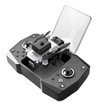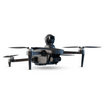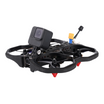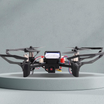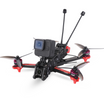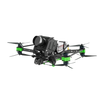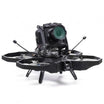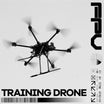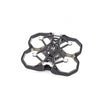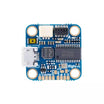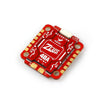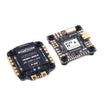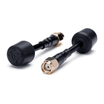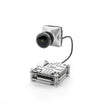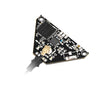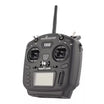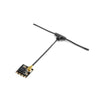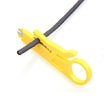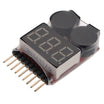What makes a drone more than just a flying camera? At InsideFPV, we believe it's the soul of innovation and relentless R&D that breathes life into these aerial marvels.
In the rapidly evolving world of drone technology, InsideFPV stands at the forefront of innovation. Our journey from enhancing drone vision to achieving unprecedented levels of autonomy is a testament to our commitment to pushing boundaries.
Have you ever wondered why we're all abuzz about drones? It's because these nifty gadgets are not just about snapping cool aerial photos anymore; they're transforming how we tackle everything from farming to keeping our borders safe. And we're not just building drones; we're infusing them with smarts that make them as easy to interact with as your smartphone. Our journey is about making drones that don't just fly but think, adapt, and learn from their adventures.
What Does It Mean for a Drone to See? The Inception of Sight
How do drones understand the world in color and detail?
Our goal was to create drone vision systems that can see and understand the visual world similarly to human eyesight. Human vision relies on detecting a wide range of color hues and light intensities, so we put effort into calibrating the image sensors on drones to be sensitive across the full color spectrum that humans see - reds, greens, blues, and everything in between.
By giving drones the hardware and image processing algorithms to interpret robust color images, we have enabled drones not just to take visually appealing pictures from the air, but to actively make sense of complex landscapes in real-time. This allows drones to navigate smoothly through cluttered environments, avoiding obstacles even when flying fast.
Moreover, accurate visual understanding of textures, objects, heights, and distances allows drones to perform well even without GPS guidance. This makes them valuable and versatile systems for public services like search and rescue, police operations, 3D mapping, and defense applications where navigating difficult environments is crucial.
Can Drones Learn to Fly Complex Paths on Their Own? What's the next step in drone autonomy and navigation?
The quest for autonomy led us to a groundbreaking achievement: enabling our drones to execute intricate flight paths autonomously. This Autonomy Exercise Part 2 transformed our drones from automated flyers to intelligent beings.
Imagine telling a drone to "draw an 8 in the sky," and it just gets it, no fuss. That's what hitting Level 5 autonomy felt like for us. Our drones went from being high-tech toys to smart buddies in the sky. They started understanding commands and doing complex aerial tricks as easily as if you were asking your phone to set an alarm. It was a big deal because it meant our drones could now take on any path you imagine, anywhere in the world, all by themselves. This step was like teaching a robot to understand you as clearly as your best friend does, and it showed when our drones danced in the sky, tracing out numbers with the precision of an artist.
https://www.linkedin.com/posts/deyvant-bhardwaj_design-technology-ai-activity-7063557473361641472-GFj4/?utm_source=share&utm_medium=member_desktop
How Advanced Can a Drone's Autonomy Become? What breakthroughs have been made in Level 4 Autonomy?
Our innovations in drone technology did not end with developing sophisticated navigation and mapping capabilities. We achieved a major leap in drone autonomy, reaching Level 4 on the scale - where drones can now make informed decisions independently based on actively perceiving and comprehending the nuances of their environment in real time.
Whether inspecting damage on unstable structures, maneuvering around randomly moving obstacles in congested spaces, or exploring hazardous sites, these drones can autonomously deliberate through options and choose prudent routes forward using their own cognition. Their rich awareness of visual details plus ability to connect the dots and think ahead is opening up new possibilities.
This level of self-governed decision-making and situational response marks a pivotal milestone for creating adaptable drones that can fluidly interact with complex, fast-changing real-world contexts.
What Can Drones Learn From Millions of Data Points?How does extensive data training enhance a drone's capabilities?
Our story takes an intricate turn with pose estimation—our drones learned to interpret a myriad of movements. This part of our narrative delves into the complexities of data training, where AI algorithms dance through vast datasets to capture the essence of movement, from the poised stances of military personnel to the wild gestures of nature's creatures.
By training advanced AI models on millions of images showing diverse animal and human poses, gestures, and movements, we have developed groundbreaking pose estimation capabilities in our drones for interpreting motions and contexts that rival human eyes. This technology allows unprecedented mid-air discernment between species, analysis of graceful movements, deduction of activities through nuanced postures, and informed decision-making based on visual contexts.
Can Drones Operate Without GPS?How do InsideFPV drones find their way in GPS-denied environments?
A major challenge we overcame was creating drones that can navigate precisely even without GPS, which is unavailable inside buildings or lacking in certain outdoor areas.
By engineering sophisticated on-board sensors and parallel AI systems that align vision data to create reliable alternative guidance mechanisms, our drones now achieve precision navigation and mobility without any GPS dependency. This breakthrough skill to maintain orientation and adaptively chart efficient trajectories in disorienting contexts like cities or forests by fully autonomous perception and mapping greatly expands mission scope into once prohibitively complex terrain that defeated traditional drones reliant on external satellite positioning infrastructure still lacking in many areas.
How Do Drones Get Smarter Over Time? What's the 'mother-baby' concept, and how does it apply to drone learning?
At the heart of our drones' learning process lies the 'mother-baby' concept, a method that mirrors human learning. By nurturing our drones through complex datasets, we've achieved a level of AI sophistication that allows drones to adapt and learn from their experiences, enhancing their operational precision. This section will examine how our AI drones are nurtured to achieve unparalleled precision and adaptability.
What Role Can Drones Play in Defense Without GPS? How can drones contribute to military tactics in challenging environments?
-We have developed a new small drone called the Baby Drone specially designed for navigating inside buildings or outdoors without using GPS signals. It has multiple vision sensors and on-board AI processing, representing the most advanced drone we've engineered. The parallel image sensors allow it to see in all directions for superior awareness. The AI neural processors (NPU) running navigation algorithms also make it extremely adaptable to complex settings. This makes the Baby Drone exceptionally good at reconnoitering unfamiliar places while avoiding obstacles, even in dark, messy or disorienting terrain. By cleverly fusing input from its diverse vision sensors, it can map any landscape, recognize threats, find targets, and carry out mission-critical intelligence tasks even in GPS-denied environments. The Baby Drone achieves unmatched reliability and versatility for operation in the trickiest real-world situations where most drones fail or crash. Outfitted for full autonomy plus smart sensing, it promises to redefine what's possible for drones to accomplish.
What is Level 5 Autonomy in Drones? How does reaching Level 5 Autonomy change the game for drone operations?
Reaching Level 5 autonomy wasn't just a milestone; it was a transformation.Our drones can now adapt and continue to improve by learning from the surroundings during flight. This transforms drones from just pre-programmed machines to autonomous systems that keep developing intelligence in tandem with changing real-world conditions. The drone becomes an active participant that progresses in harmony within any environment.
Reaching this drone autonomy milestone signifies more than mastering technology. It enables a future where drones and humans can collaborate at higher levels, interacting seamlessly with common situational understanding to make decisions cooperatively. Drones would act as responsive partners instead of merely passive tools.
InsideFPV's journey through the evolution of drone technology is a narrative of relentless innovation and a vision of the future. Each milestone, from the genesis of drone vision to the achievement of Level 5 autonomy, marks a step towards a world where drones extend our capabilities, enhance our safety, and broaden our horizons.
What does the future hold for drone technology and autonomous flight?
Stay tuned to InsideFPV as we continue to pioneer the skies, explore the uncharted, and redefine the boundaries of what drones can achieve.

